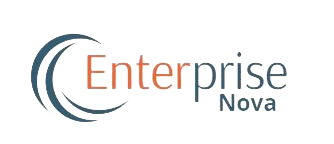You have probably heard a lot about blockchain and Web 3.0 (Web3) lately, especially if you are interested in cryptocurrency, tech, or how the internet is changing. These two terms are related, but they do not mean the same thing. Let us break it down in simple terms.
What is Blockchain?
Blockchain functions as a decentralized distributed database, where information is kept on numerous computers, making it secure against alterations. Transactions are verified using a consensus process, ensuring uniformity throughout the network.
In blockchain technology, transactions are compiled into blocks that are subsequently connected, creating a secure and transparent chain. This framework ensures data integrity and offers a secure record, making blockchain perfect for uses such as cryptocurrencies and supply chain management.
The primary advantage of blockchain is its capacity to ensure security, transparency, and trust without depending on conventional intermediaries like banks or other third parties. It is the technology behind Bitcoin, Ethereum, and other cryptocurrencies, but it is also being used in other areas like voting, supply chains, and healthcare.
What is Web 3.0 (Web3)
Now, let us talk about Web 3.0, also called Web3. This is the next big version of the internet.
- Web 1.0 was mostly read-only websites (like old news pages).
- Web 2.0 gave us social media, apps, and interaction — but big companies like Google, Facebook, and Amazon have control over our data.
- Web 3.0 wants to fix that by giving control back to users, not corporations.
Web3 uses blockchain to make websites and apps decentralized. That means no single company owns the platform, people do. You might use Web3 for things like decentralized social media, earning crypto tokens, or using apps where you own your own data.
So What is the Difference?
| Feature | Blockchain | Web 3.0 |
| What it is | A technology for decentralized, immutable ledgers | A vision for a decentralized internet using blockchain |
| Function | To store and verify data securely | To make the internet more open and user-owned |
| Scope | Technology Layer | Application and user interaction laye |
| Use Cases | Cryptocurrencies, supply chains, smart contracts | Decentralized apps (dApps), NFTs, DAOs |
| User Control | Limited to transaction verification | Emphasizes user ownership and data control |
Essentially, blockchain is the tool, and Web3 is what we are trying to build with it; a better internet.
Why It Matters
Understanding the difference is important because Web3 is built on top of blockchain, but it goes much further. It is about changing how we use the internet, how we protect our data, and how we interact online.
Web3 could mean:
- No more logging into 10 different accounts.
- Earning rewards for your online contributions.
- Owning your data instead of giving it away for free.
Final Thoughts
Blockchain is the engine. Web3 is the car.
You need both but they do different things.
As more people, developers, and companies build on these technologies, we are likely to see big changes in how we shop, play games, invest, and even vote online.
So next time someone says “blockchain” or “Web3,” you will know exactly what they are talking about and how they fit together.

